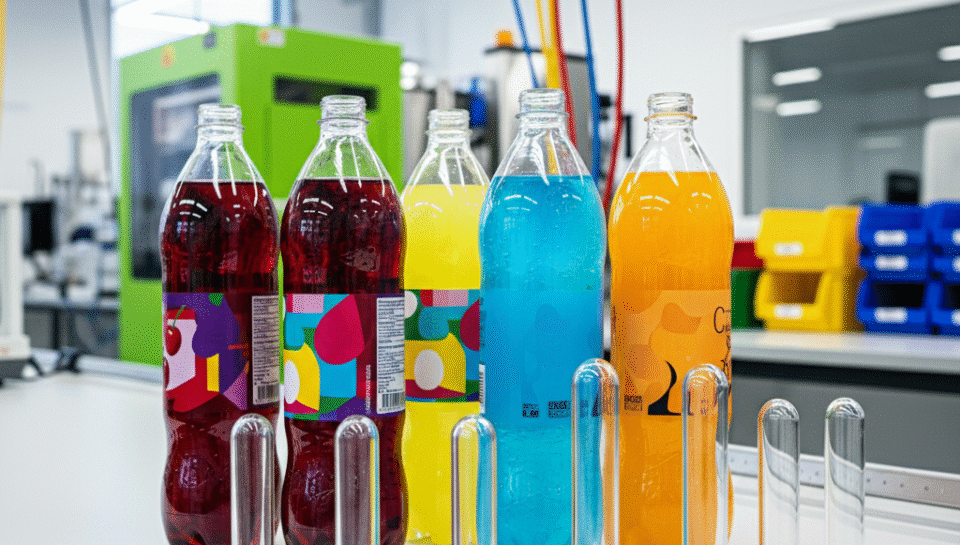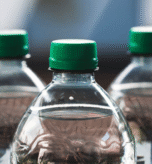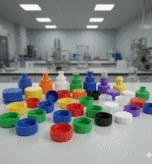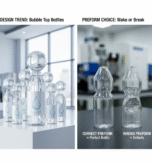Carbonated soft drinks (CSD) are a high-demand beverage category with equally high packaging requirements. Unlike still water or juice, these drinks are filled with carbon dioxide under pressure, which means the container must be exceptionally durable and precisely engineered.
For manufacturers, selecting the right PET preform for bottle production is one of the most critical decisions. The wrong choice could result in burst bottles, leaks during transport, poor shelf presentation, or higher scrap rates – all of which reduce profitability and damage brand trust.
At DRJ Plasttech, a leading plastic bottle preform manufacturer based in Surat, we help beverage companies avoid these pitfalls with tailored, high-quality PET preform solutions specifically designed for CSD applications. Whether you’re bottling 250ml cans or 2-liter family packs, this complete guide will help you make an informed decision about your preform selection.
Table of Contents
Why PET is Ideal for CSD Packaging
Design Considerations for PET Preforms in CSD
Common Use-Cases: Matching Preforms with Bottle Sizes
Step-by-Step Process for Choosing the Right PET Preform
FAQs on CSD PET Preforms and Bottling
Why PET is Ideal for CSD Packaging
Polyethylene Terephthalate (PET) is the material of choice for modern beverage packaging for several key reasons:
- Strength & Flexibility: PET can withstand internal pressures of up to 6 bar when properly processed.
- Transparency: It offers a clear, attractive appearance for retail shelves.
- Lightweight: PET is significantly lighter than glass or metal, reducing shipping and storage costs.
- Barrier Properties: With proper processing and additives, PET can retain carbonation and prevent gas exchange.
- Recyclability: PET is 100% recyclable, aligning with the growing demand for sustainable packaging.
These benefits make PET the go-to material for both still and carbonated beverages but CSD bottles require far more precision in preform design and manufacturing.
Design Considerations for PET Preforms in CSD
1. Preform Weight and Wall Thickness
The internal pressure of carbonated drinks places significant stress on bottle walls. This makes weight and thickness crucial.
- A 500ml bottle for still water may use a 19g preform.
- A 500ml CSD bottle typically needs a 28g to 30g preform to handle pressure.
Thinner preforms risk bottle panelling, deformation, or breakage during filling. Overweight preforms, on the other hand, increase costs unnecessarily.
Pro Tip: Use stretch ratio and blow moulding tests to validate wall distribution before finalising a preform weight.
2. Neck Finish and Closure System
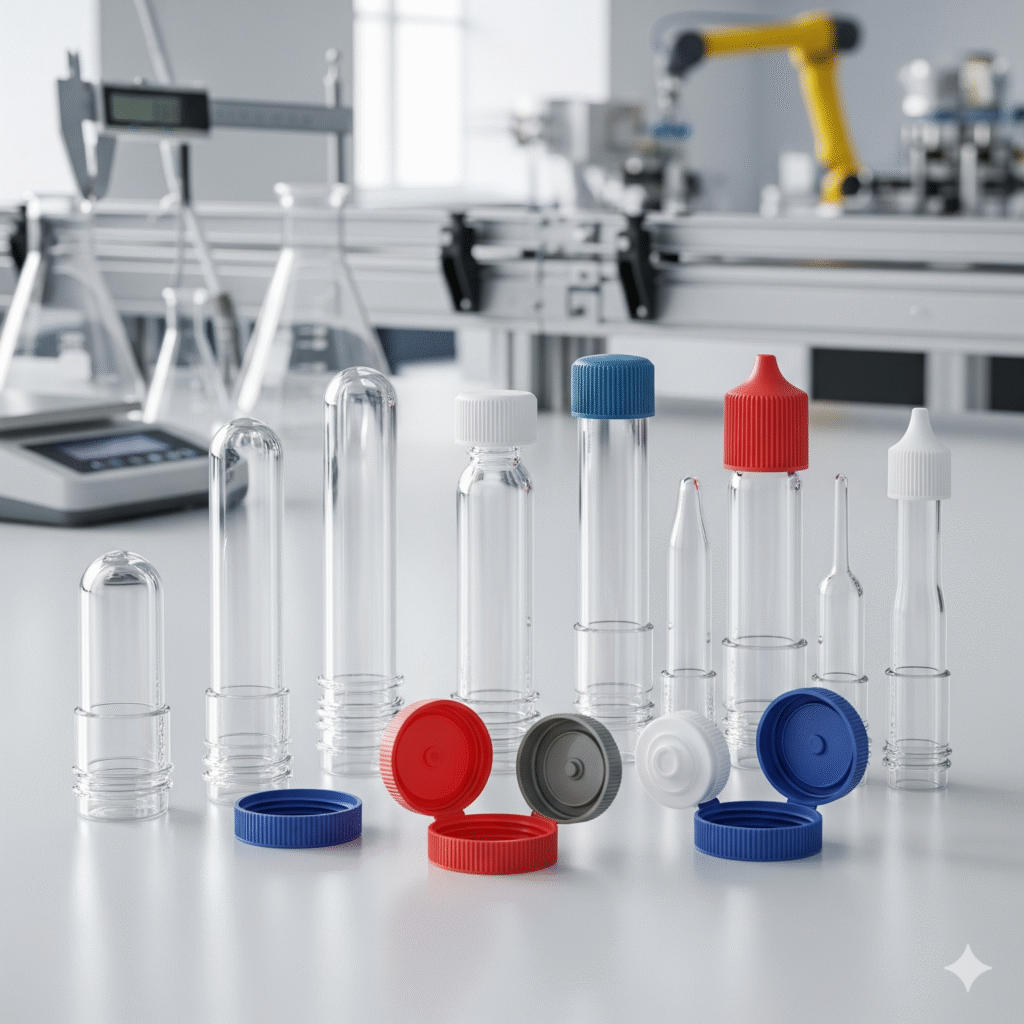
CSD beverages require a pressure-resistant sealing system. The industry-standard neck finishes for CSD include:
- PCO 1810 (older, thicker thread)
- PCO 1881 (lighter, more eco-friendly version)
These necks are compatible with tamper-evident caps designed to maintain carbonation integrity. Selecting the wrong neck design can lead to:
- Improper sealing
- CO₂ leakage
- Cap blow-offs during storage or transport
At DRJ Plasttech, we manufacture preforms with highly precise neck dimensions using digital tooling systems to ensure perfect cap compatibility.
3. Barrier Performance and Shelf Life
CSD beverages must retain carbonation for months on shelves. PET inherently allows some gas permeation, which is why choosing the right preform design and additives is crucial.
Enhancements for barrier performance include:
- Multilayer PET Preforms: Layers of PET combined with barrier materials like nylon or EVOH.
- Active Additives: Oxygen scavengers blended into the resin to reduce oxidation.
- Plasma Coating (post-mould): Thin internal coatings applied after bottle formation.
Though these methods can raise costs, they are essential for products with longer shelf lives or premium positioning.
4. Preform Clarity and Crystallinity
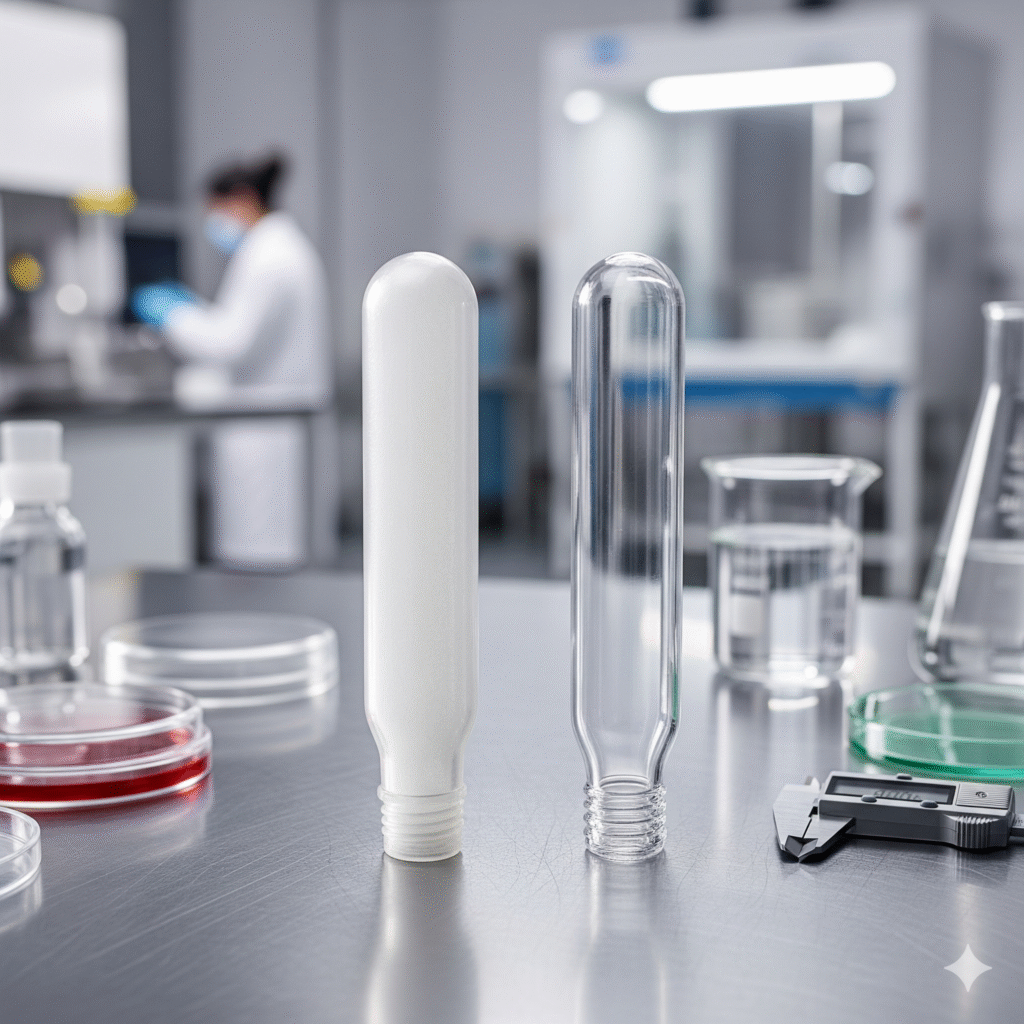
The degree of crystallinity in a PET preform affects both aesthetics and mechanical performance.
- High crystallinity = stronger but more opaque (not ideal for transparent CSD bottles).
- Low crystallinity = better transparency but weaker under pressure.
Achieving optimal crystallinity requires careful control of the PET preform heating temperature during injection moulding and reheat blowing. Inconsistent heating leads to hazy or brittle bottles, which are unacceptable for branded products.
DRJ Plasttech uses precise temperature management and mould cooling systems to maintain ideal crystallinity levels in every plastic bottle preform we manufacture.
5. Mould Compatibility and Blowability
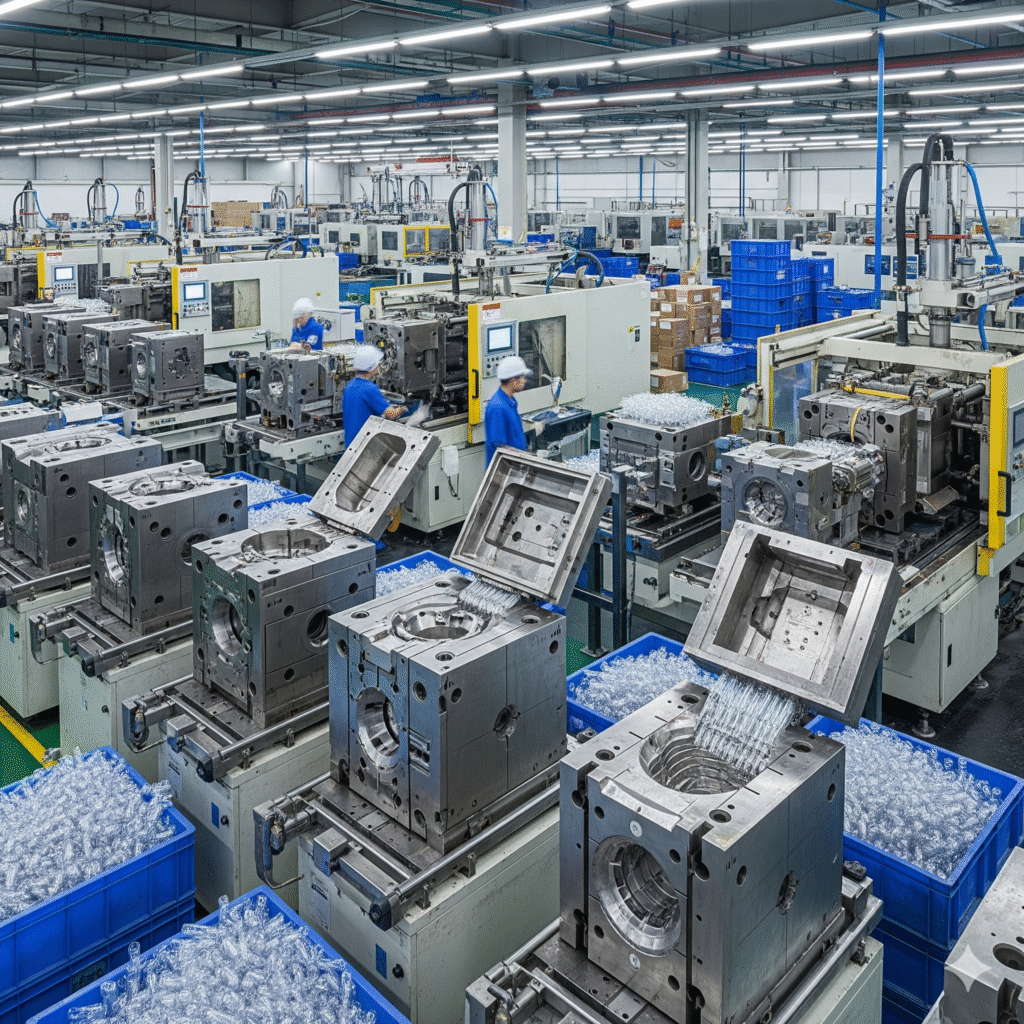
Your selected preform must work seamlessly with your existing bottle moulds and blowing machines.
Factors to check:
- Stretch length ratio (preform length vs bottle height)
- Blow mould neck ring compatibility
- Heating profile in the preform heater oven
- Expansion ratio during stretch-blow moulding
Preform geometry, including shoulder design and wall thickness distribution, plays a critical role in bottle performance. Poor fit can cause:
- Uneven bottle thickness
- Base cracking
- Wrinkling or panelling under pressure
At DRJ Plasttech, we offer custom preform design support to ensure each PET preform for bottle applications fits perfectly into your downstream systems.
6. Resin Quality and Moisture Control
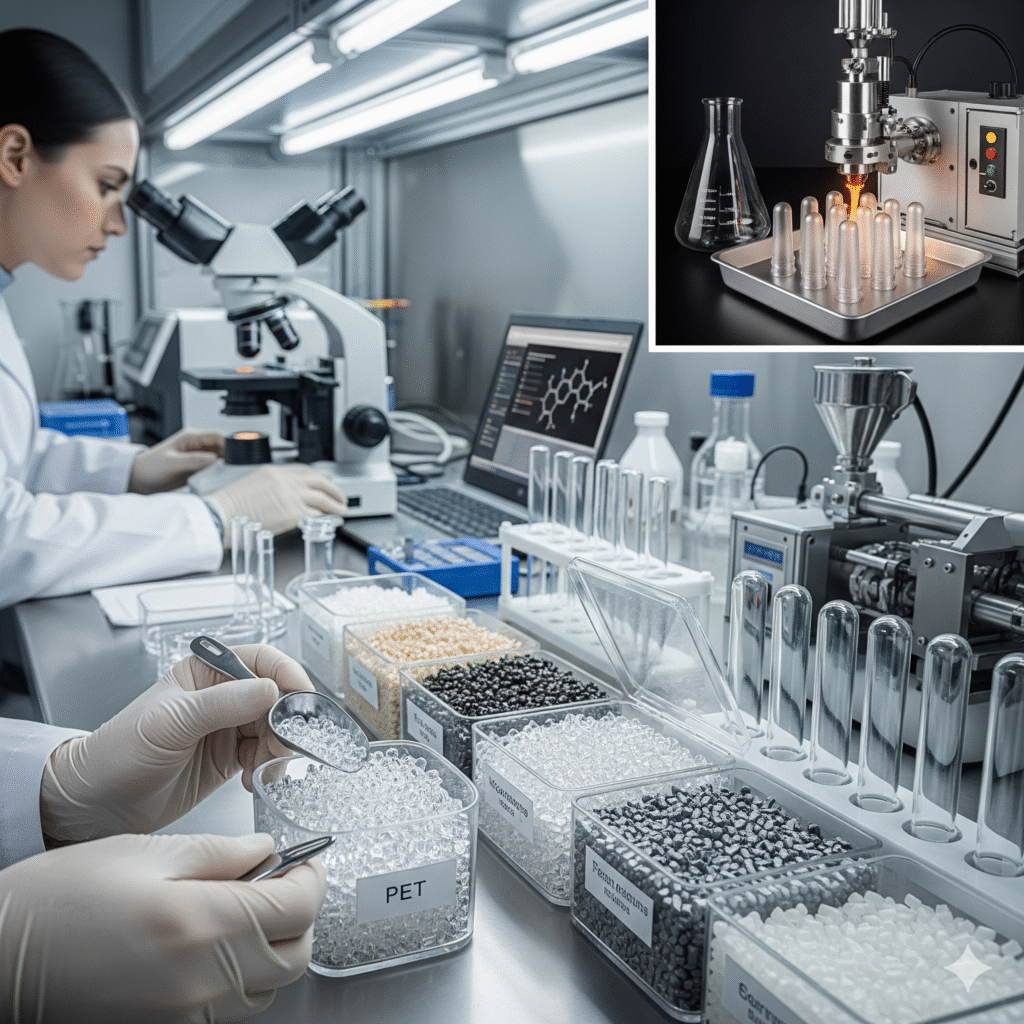
PET is hygroscopic, meaning it absorbs moisture from the environment. If not properly dried, this moisture turns into steam during injection, creating micro-bubbles and weakening the structure.
Risks of poor moisture control:
- Brittle preforms
- Yellowing or colour change
- Reduced CO₂ retention
- Poor transparency
At our Surat facility, we use high-efficiency dehumidifying dryers to maintain optimal resin moisture content (below 0.005%)—a critical step in ensuring the long-term durability of our plastic bottle preforms.
Common Use-Cases: Matching Preforms with Bottle Sizes
| Bottle Size | Preform Weight | Neck Finish | Notes |
| 250 ml | 23g–25g | PCO 1881 | For compact, single-serve formats |
| 500 ml | 28g–30g | PCO 1881 | Most common size for on-the-go CSD |
| 1 Litre | 34g–38g | PCO 1810 | Requires stronger wall support |
| 1.5 Litre | 40g–45g | PCO 1810 | High internal pressure; durability critical |
| 2 Litre | 45g–48g | PCO 1810 | Ideal for family packs and multi-serves |
This chart provides a general guideline, but final specifications should be validated with actual bottle-blowing tests.
Step-by-Step Process for Choosing the Right PET Preform
Selecting the ideal PET preform for bottle manufacturing (especially for CSD applications) requires a detailed approach. Here’s a structured process to ensure long-term performance and efficiency:
Step 1: Identify Your Beverage Specifications
- Carbonation Level: Higher carbonation (e.g., soda) needs stronger preforms than lightly carbonated drinks (e.g., flavoured sparkling water).
- Shelf Life: Longer shelf life may require barrier enhancements.
- Filling Method: Hot-fill or cold-fill affects material behaviour.
Step 2: Define Bottle Size and Geometry
- Determine your final bottle volume (e.g., 250ml, 500ml, 1.5L).
- Consider special design features like grip patterns or wide shoulders, which affect wall thickness during blowing.
Step 3: Select Appropriate Preform Weight
Choose a plastic bottle preform weight that meets structural and marketing requirements while remaining cost-effective. Always test multiple weights to find the balance between durability and material savings.
Step 4: Choose Neck Finish and Closure System
Ensure compatibility with your capper machine, tamper-evidence requirements, and CO₂ retention specifications. PCO 1881 is now widely preferred due to its lightweight yet strong design.
Step 5: Validate Resin Quality
Ensure the resin is:
- Food-grade
- Free from contaminants
- Has an IV (Intrinsic Viscosity) suitable for CSD bottle blowing (typically 0.76–0.84)
Step 6: Conduct Blowing and Filling Trials
Use sample preforms to test blow moulding in actual production conditions. Evaluate for:
- Base stability
- Sidewall symmetry
- Cap fit and seal integrity
Common Mistakes to Avoid
Even experienced teams can make errors that affect bottle performance or increase costs. Watch out for these:
Using Water Bottle Preforms for CSD
Water bottle preforms are lighter and not designed to hold carbonation. This is a common cost-cutting mistake that leads to high scrap rates.
Ignoring Preform Neck Precision
CSD closures must seal tightly under pressure. Even small deviations in neck thread dimensions can lead to slow CO₂ leaks and compromised shelf life.
Overweight Preforms Without Justification
Heavier doesn’t always mean better. Every additional gram increases material cost and affects line efficiency. Always test alternatives.
Inadequate Quality Checks
Skipping moisture checks or temperature control in the injection process can lead to crystallinity issues, yellowing, or uneven blowing.
Lack of Customisation
Every bottle design and filling setup is different. Off-the-shelf preforms may not provide the best results without proper customisation.
Final Thoughts
Whether you’re launching a new CSD brand or optimising your current packaging, we ensure your plastic bottle preforms are built for performance and profit.
In the world of carbonated soft drinks, packaging isn’t just a container, it’s part of your product experience. Bottles that deform, leak, or lose carbonation quickly damage your brand and increase costs. That’s why choosing the right PET preform for bottle manufacturing is a strategic decision.
By working with an experienced manufacturer like DRJ Plasttech, you gain access to engineering-grade quality, expert technical support, and a partnership focused on long-term success. Our preforms are more than just plastic, they’re the foundation of your beverage’s performance on the shelf and in the consumer’s hand.
FAQs on CSD PET Preforms and Bottling
1. What is a plastic bottle preform?
A plastic bottle preform is a moulded intermediate product made of PET resin. It resembles a test tube with a threaded neck and is later blow-moulded into a bottle.
2. What makes PET ideal for CSD packaging?
PET offers the strength to withstand carbonation, excellent clarity, light weight, and recyclability. It also performs well in high-speed bottling environments.
3. How is a PET preform for bottle different in CSD vs. water?
CSD preforms are typically heavier and have a more robust neck finish. They’re designed to handle higher internal pressure without deforming.
4. Why does preform weight matter?
Weight affects the final bottle’s ability to hold CO₂ without failure. Heavier preforms have thicker walls and better structural integrity.
5. Can I reuse water preform molds for CSD preforms?
Not recommended. CSD bottles need more uniform stretching and stronger bases, which may require mold design changes.
6. What is the ideal preform heating temperature for CSD bottles?
Usually between 270°C and 290°C depending on resin type. Consistent heating prevents yellowing and ensures proper stretch during blowing.
7. What is the difference between PCO 1810 and 1881?
PCO 1810 is an older, heavier neck finish. PCO 1881 is lighter, more efficient, and widely used today due to cost and material savings.
8. How do I prevent leaks in CSD bottles?
Ensure precise neck finish dimensions, use the right cap, and test the closure system under pressure. DRJ Plasttech’s preforms are digitally calibrated to meet sealing standards.
9. Do I need barrier additives for CSD?
Not always. For standard shelf life (3–6 months), single-layer PET often suffices. For longer durations or export products, consider multilayer or coating solutions.
10. Where can I get reliable PET preform supply in Gujarat?
DRJ Plasttech, based in Surat, is a trusted supplier offering customised PET preform for bottle manufacturing that is optimised for CSD, edible oil, and more.
Why DRJ Plasttech is the Preferred Supplier for CSD Preforms
We understand that CSD bottling demands more than just precision—it demands reliability. With over 15 tons of daily production and a strong footprint across Gujarat and surrounding states, DRJ Plasttech offers:
- Tailored preform solutions for all CSD volumes
- Consistent supply with short lead times
- PCO neck expertise with digital tooling
- Advanced moisture control and crystallinity management
- In-house technical support for blowing and filling trials


